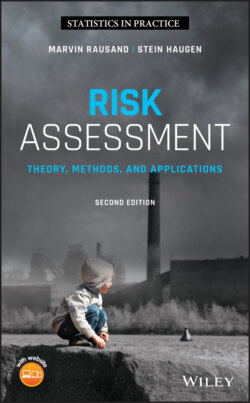Читать книгу Risk Assessment - Marvin Rausand - Страница 194
3.4 Risk Assessment in Safety Legislation
ОглавлениеA number of EU directives and regulations make it mandatory to carry out various types of risk assessment of a wide range of potentially hazardous systems and activities. This is also the case in other parts of the world. Some main laws are introduced briefly below to illustrate the wide span of application:
The Seveso directive. The EU Directive on the control of major accident hazards involving dangerous substances (82/501/EEC) is often referred to as the Seveso directive because it was issued in response to the Seveso accident in 1977. The Seveso directive was amended in 1986 and 1988 to take into account the lessons learned from the Bhopal accident and the Sandoz fire. A more significant revision of the directive was issued in 1996 as a consequence of the Piper Alpha accident, and is called the Seveso II directive (EU 1996).1 In 2012, the directive was updated once more and is now called the Seveso III Directive (2012/18/EU of the European Parliament and of the Council of 4 July 2012 on the control of major‐accident hazards involving dangerous substances).The application of the Seveso III directive depends on the quantities of dangerous substances present (or likely to be present) at an establishment. Two levels (“tiers”) of duty are specified in the directive, corresponding to two different quantities (or thresholds) of dangerous substances. Sites exceeding the higher, “upper tier” threshold are subject to more onerous requirements than those that qualify as “lower tier.”Similar legislation is implemented in several other countries, such as 29 CFR 1910.119, “Process safety management of highly hazardous chemicals,” in the United States. This law requires that process hazard analyses be carried out.
The EU machinery directive. This directive (89/392/EEC) covers safety aspects of a wide range of machines that was introduced in 1989 and revised in 2006 (2006/42/EC). This directive requires that risk analyses are carried out for some dangerous machines, and a specific risk analysis standard, ISO 12100 (2010), has been developed for this purpose. Similar legislation has been implemented in several countries.
The Health and Safety at Work, etc., Act of 1974. HSWA is the principal health and safety law in the UK. It places general duties on employers to ensure the health, safety, and welfare of their employees at work, and also to conduct their undertaking in such a manner that persons outside their employment are not exposed to risk. Employers must carry out various risk assessments to ensure that these duties are met “so far as is reasonably practicable” (SFAIRP).
The Offshore Installations (Safety Case) Regulations 1992. These regulations were issued by the UK Health and Safety Executive (HSE) and require that specific risk assessments be carried out and that a safety case be developed and kept “alive” (i.e. updated). The regulations were revised in 2005 and later again in 2015.
The US Maritime Transportation Security Act 2002. This act is designed to protect US ports and waterways from a terrorist attack. It requires vessels and port facilities to conduct risk and vulnerability assessments.
Norwegian offshore safety regulations. In Norway, regulations concerning the implementation and use of risk analyses in petroleum activities have been issued by the Petroleum Safety Authority Norway and the Norwegian Ministry of the Environment. A special standard, NORSOK Z‐013 (2010), has been developed to support the required risk assessments.
More on safety legislation within different applications can be found in Chapter 20.
